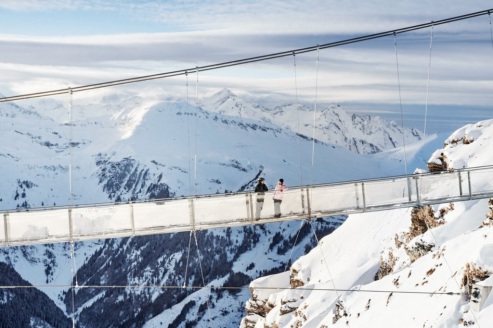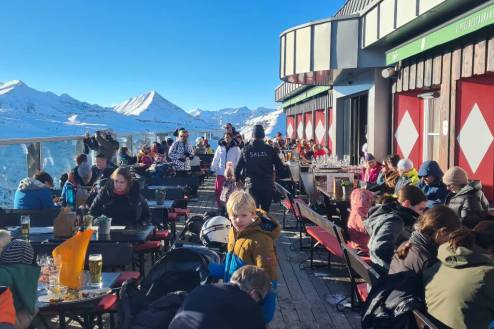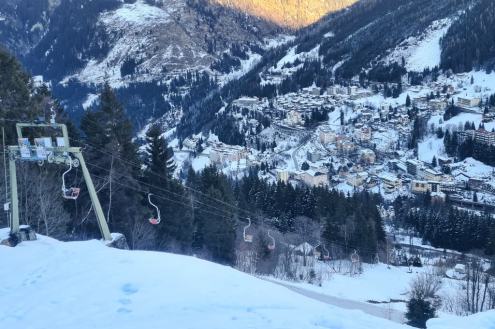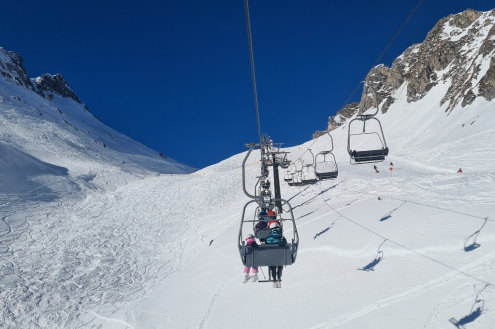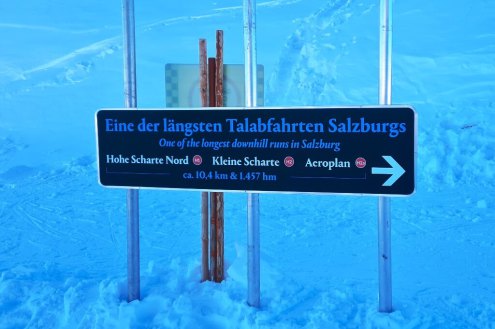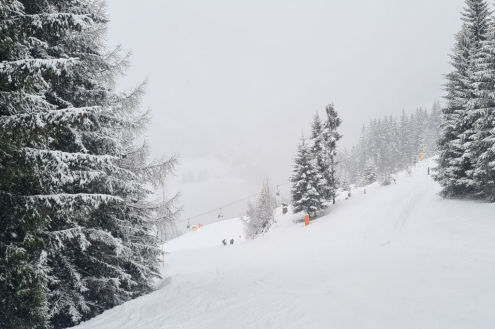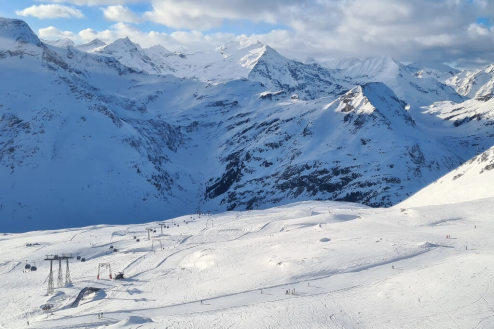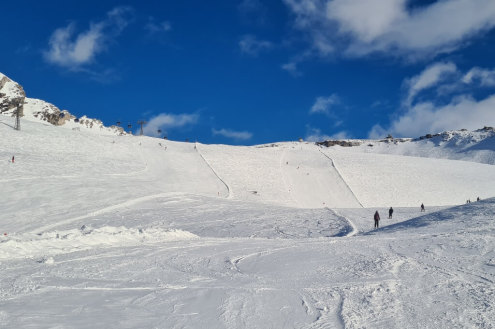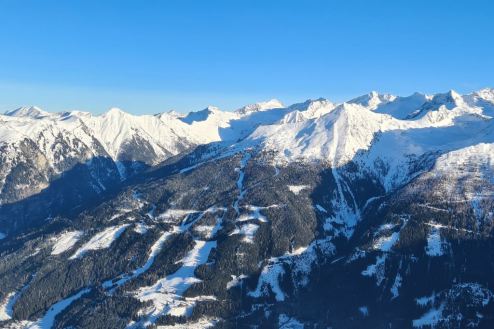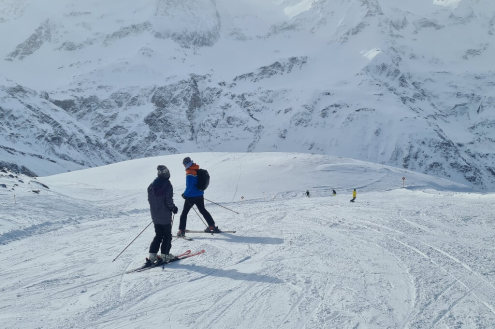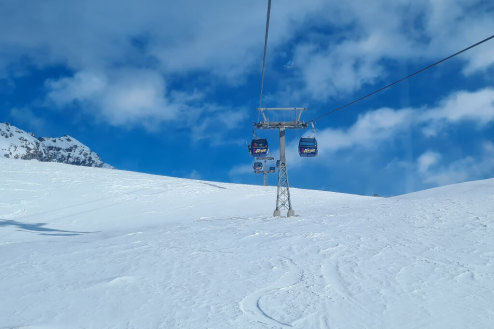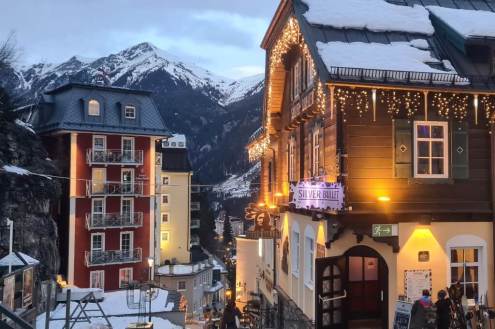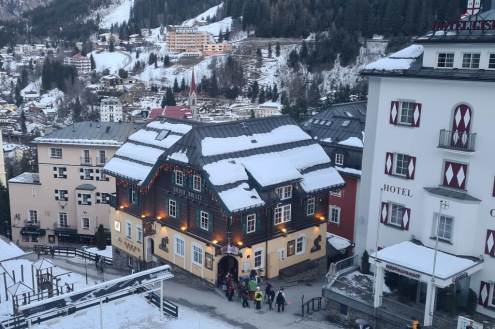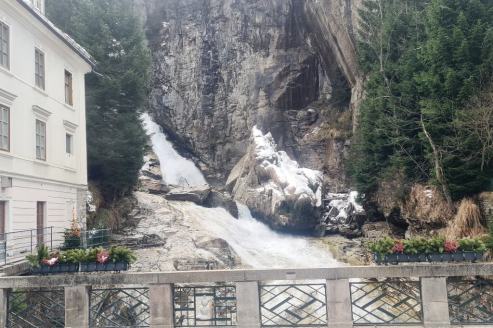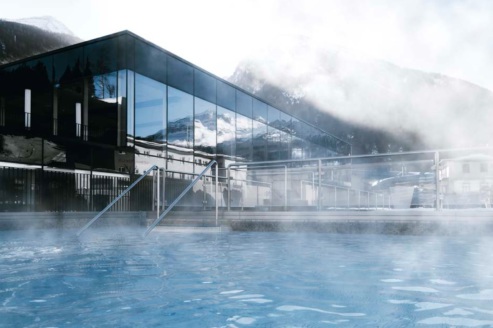Our blog:
Bad Gastein - 5 reasons to visit this 'forgotten' Austrian gem
by Fraser Wilkin, 23 March 2024
Back in the 90s, the Austrian ski and spa resort of Bad Gastein was a household name with British skiers, featuring in all our main ski holiday brochures, and attracting the rich and famous to both its slopes and ‘healing waters’.
Ever-popular on the continent, it seemed to fall out of favour with some of the larger UK tour operators for a while, but it’s now starting to make a comeback.
I was finally fortunate enough to visit back in January, and was not disappointed!
It may not conform to many of the Austrian ski resort stereotypes - Bad Gastein is very much a town and not a village - but what it lacks in traditional Alpine atmosphere, it more than makes up for in quirky ‘belle époque’ charm. What's more, its skiing is more extensive than you might think and, being relatively high (by eastern Alpine standards), is also surprisingly reliable for snow.
Here are the top 5 reasons why Bad Gastein should be on your skiing shortlist next winter:
1. The ski area offers impressive extent and variety of slopes!
Bad Gastein is the southernmost of the three main ski resorts in the Gastein valley, with Bad Hofgastein just 7km to its north, and Dorfgastein another 8km beyond. Together the valley offers an impressive 208km of pistes across five distinct ski areas.
Immediately above Bad Gastein itself is the Stubnerkogel sector, served by an efficient gondola starting right next to the train station. As most of the runs here are of red gradient, this is a mountain best appreciated by confident intermediates, with the few “true blues” tending to take the form of paths criss-crossing the mountain.
In keeping with the Gastein valley as a whole, many of the runs are long, with drops of 1000m or more on both sides of the mountain and plenty of scope for off-piste.
My favourite descent in this sector was the thigh-burning B11 “Angertal” run from the 2246m summit of the Stubnerkogel all the way down to Angertal at 1175m. If you have a head for heights, be sure to take in the astounding 360° panoramic views from the 28m-high Stubnerkogel suspension bridge before you set off!
The slopes of Bad Gastein are completely integrated with the slopes of Bad Hofgastein, with the former's Stubnerkogel sector merging fairly seamlessly into the Schlossalm area above Bad Hofgastein, via Angertal. This is another major lift entry point into the ski area, popular with locals but which lacks its own accommodation.
The Schlossalm area is also extensive, varied and best suited to confident intermediates who will particularly enjoy the “away from it all” 1450m vertical red H1/H2/H2a run (“Hohe Scharte Nord/Kleine Scharte/Aeroplan”) from the top of Schlossalm down to the valley floor in Bad Hofgastein. This is no doubt one of the greatest intermediate runs in Austria.
Further down the valley is the village of Dorfgastein, whose sizeable area of skiing is completely separated from the slopes of Bad Gastein and Bad Hofgastein, but shared with the ski resort of Grossarl, located in a completely different valley to the east.
This highly varied area offers slightly gentler terrain than either Stubnerkogel or Schlossalm, with more trees - great in a storm - and a more family-orientated atmosphere. It may be 20-30 minutes away from Bad Gastein by bus (free with a guest card, available at all hotels), but it is well worth the visit, especially on days when visibility is poor.
Those after fast-cruising on wide, open and immaculately-groomed slopes should definitely visit the Sportgastein area, a 20-25 minute bus journey to the south of Bad Gastein. Often overlooked by tourists, but a firm favourite with the locals, the runs here are also long (up to 1000m vertical) and often have the best snow in the area.
This emerged as my favourite ski area in the valley - in part thanks to the great snow conditions, but also for its wilder ‘away-from-it-all feel’ , located at the southern head of a dead-end valley with no resort base as such – just one main lift (with mid-station) serving a series of long, sweeping runs which are great for notching up huge verticals.
Last, but not least, is the tiny but underrated Graukogel area, accessible by chairlift on the eastern side of town. This area gets very little sun early in the winter, and it was indeed closed during our visit due to icy conditions.
In good snow, though, the Graukogel sector offers some long and challenging runs of up to 1000m vertical and, being often ignored by visitors, can be blissfully uncrowded.
2. Bad Gastein is more snow-sure than most Austrian ski resorts
Bad Gastein has a better snow record than you might think, firstly thanks to its top height of over 2600m - impressive by Austrian standards, where many big name ski areas struggle to top 2000m.
Secondly, being set so deep in the eastern Alps, it has a “continental" climate offering greater protection from warm Atlantic winds than resorts further west or close to the northern foothills of the Alps, which are more susceptible to rain.
For the very best snow conditions in the area, head to Sportgastein, where the slopes face north-west and the top height is 2686m. On our visit in January 2024, although there was still plenty of good skiing to be enjoyed in other parts of the Gastein valley, the snow quality in Sportgastein was exceptional from top to bottom.
3. Bad Gastein is surprisingly easy to get to
A quick look at the map and you'll see that Bad Gastein is set quite deeply into the Austrian Alps, about half-way between the German border (to the north) and the Slovenian border to the south. However, if you think that might make it difficult to get to, think again!
The nearest airport, Salzburg, is just 90 minutes away by car, and Munich airport is less than 2 hours away, traffic-permitting. Even more appealing is the fact that you can travel here easily by train from right across Europe - great for keeping down your carbon footprint!
If you have flown in to the nearest airport, Salzburg, it's no more than a 15-20 minute bus or taxi ride from there to Salzburg central railway station, from where you can pick up regular direct trains to Bad Gastein. This train journey also takes just 90 minutes and leaves you in the heart of resort, right next to the main lifts!
4. Bad Gastein is uniquely quirky and steeped in history
Bad Gastein is like no other resort. While the area around the lift hub (which includes the train station) may feel quite ‘towny’, just a few steps away from the main road you are suddenly immersed in a vision of beautifully restored belle époque hotels, clinging dramatically to the hillside, like a backdrop to a Wes Anderson film (one of the resort's hotels indeed said to be the inspiration for the 'Grand Budapest Hotel').
Central to this scene is the town’s gurgling river and spectacular steaming waterfall which plunges right through the centre of town, in three stages with a vertical drop of 341 meters. It is these hot, mineral-rich waters, emerging from the ground at over 46°C, that gave Bad Gastein its fame and have attracted visitors (including many A-list celebrities) from around the world for decades.
The key active ingredient is radon, a naturally occurring radioactive gas produced by all rocks, which is considered safe at low levels and with short-term exposure. It is claimed to cure all manner of ills, and is recognised by the Austrian health authorities and insurance companies as a legitimate therapy for chronic pain. Treatment with these radon-rich waters is regulated and not permitted in the public spa baths, but can be arranged by private appointment in specific clinics in town.
5. Bad Gastein offers plenty to do off the slopes
For daytime activities off the slopes, the Gastein valley offers extensive winter walking trails, including the stunning path along the Gasteiner Ache leading through the entire valley, from Bad Gastein to Dorfgastein, with great train and bus connections to take you back to base if you don't fancy re-tracing your steps. Even just wandering around the resort itself offers fantastic scenic views of its stunning waterfall and to the valley beyond.
Another obvious but clearly unmissable off-slope attraction are the valley’s thermal baths – you can’t visit a ski resort with ‘Bad’ in its name without sampling its spa, especially if you have children. There are in fact two public “baths” in the valley, one in Bad Hofgastein, the other in Bad Gastein. Like most resort spas they are a bit touristy and do get crowded at peak times.
Nevertheless, after some initial apprehension, our visit to the Felsentherme Bad Gastein proved a big hit with our teens, who effortlessly wiled away the best part of two hours in the assortment of indoor and outdoor pools, waterslides and under the impressive indoor waterfall
Other non-skiing activities here include skating and a 2.5km toboggan run served by its own chairlift that operates well into the evening.
Bad Gastein - key facts:
|
Resort height: |
1002m |
||
|
Slopes: |
860-2682m |
||
|
Pistes: |
250km |
||
|
Further info: |
|||
With thanks to Bad Gastein Spa and Tourist Office, Felsentherme Bad Gastein and SalzburgerLand.com...
If you enjoy reading our content - please feel free to support us:



